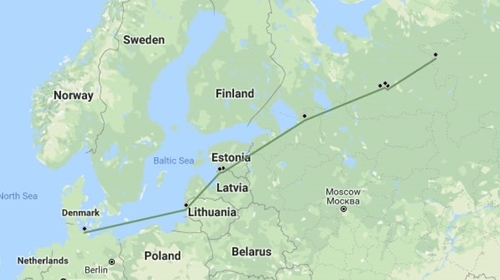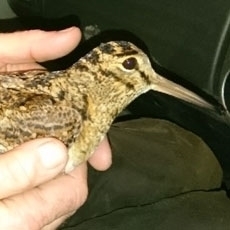By Chris Heward, Wetlands Research Assistant

I tagged Phynodderee on the Isle of Man in March 2017 and, that spring, she migrated to a breeding site in Northern Russia. Most of our Russian migrants breed in forests on the country’s western border between Moscow and St. Petersburg, but Phynodderee went much further, visiting a site beyond Archangel and the White Sea in the Komi Republic.
Generally, our tagged woodcock show a high degree of site-fidelity. They are faithful to their breeding sites, wintering grounds and even to stop-over sites along the migration. This isn’t universally true, and some individuals have switched their wintering sites from one year to the next, but faithfulness to a single breeding site is very common. We would guess that most birds return to breed close to the area where they were hatched.

In spring 2018, Phynodderee’s tag resurfaced after disappearing during the darker autumn months. She appeared to be heading for the Russian breeding site she used in 2017, but stopped 1,400 km short of Komi, in Latvia. And this where she stayed from the start of April until the very end of May.
During June, Phynodderee wandered in a north-easterly direction. Over the course of the next two months she slowly made her way to the Komi Republic and is now very close to her 2017 breeding site, having arrived there on the 11th August. In 2017, she’d reached this point by 13th April!
So why such a long pause in Latvia? It may just have been a very extended 7-week stop-over, but it seems more likely that she attempted to breed here. We know that the total time spent at this location was too short to have successfully hatched and raised a brood of chicks, so if she did try to breed it was certainly a failed attempt. Breeding can continue until the end of August in Eastern Europe and that woodcock will attempt a second brood if the first has failed - so in theory she could make a second attempt in Komi. Whether she actually does or not, depends on the environmental conditions and the physical condition of Phynodderee: it may be that her moult is now a more important priority.
As always, our satellite-tagging work is posing just as many questions as it is answering.